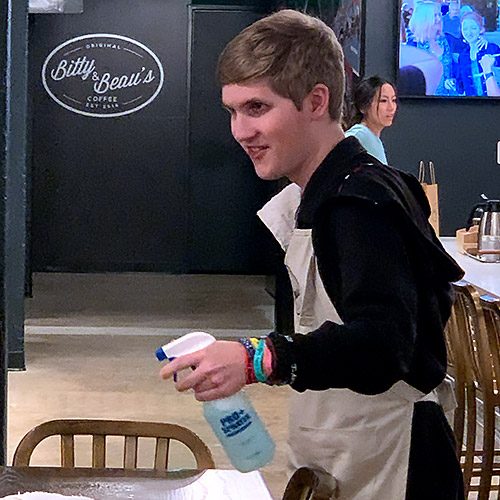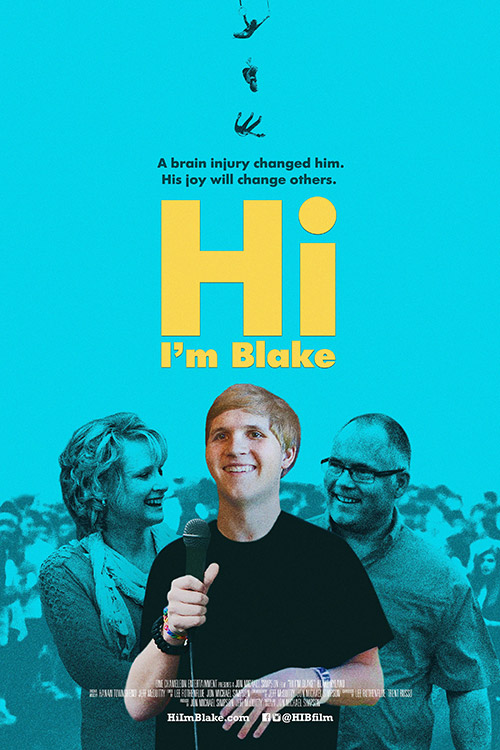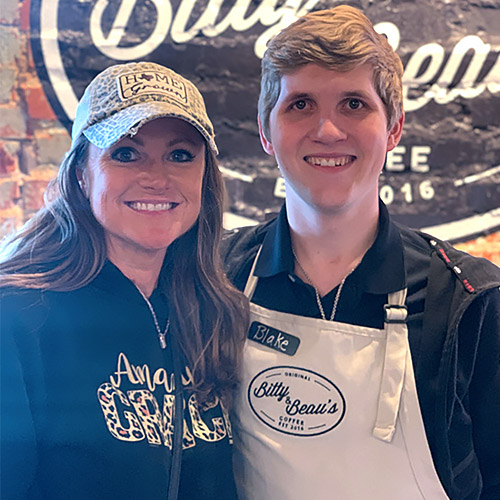A Film, a TV Segment, and now a New Job for Blake Hyland

Even as a toddler, Blake Hyland was a gymnastics wonder. Tumbling on pre-school mats and home carpeting, he summersaulted his way through childhood and became a star gymnast in his hometown of Waco, Texas. But on Feb. 18, 2014, while running down a tumble ramp, he flipped in the air, landing partially in the foam padded pit and partially on the surrounding concrete. The injury was severe, causing massive strokes in his temporal lobe, followed by a host of physical and cognitive impairments.
Blake’s parents, Pat and Cindy Hyland, braced themselves for the worst words a parent can hear: “He’s never going to be the same son you remember,” a doctor said. “They expected him to be on a ventilator for the rest of his life… if he woke up,” Pat recalled. He was in a coma for a month, and after acute rehabilitation, Blake came to Centre for Neuro Skills’ Dallas facility.
In a stunning turnaround, Blake learned to walk, speak, and reclaim many of his pre-injury skills. He graduated from high school, attended his senior prom, and enrolled at Texas Tech University (see Blake’s video). Now, a movie about him is being produced.
This year the Discovery+ network featured Blake in its “Hi I’m…” series. Inspired by his story, a production company will soon release a feature film, “Hi, I’m Blake,” that will screen in select markets.
Amid these accomplishments, Blake celebrated a new milestone, one that’s central to the CNS philosophy – he has a job. Blake works the counter at Bitty & Beau’s, a coffee shop managed by people with disabilities. Their slogan is, “It’s More Than a Cup of Coffee” and it sums up Blake’s character - he’s more than his brain injury.
One person who was moved by Blake’s story is new CNS community liaison Heather Speed. She watched Blake’s video as part of her training and was awed. On a recent trip to Waco, she wandered into Bitty & Beau’s and heard a familiar voice. It was Blake, who was extolling the virtues of French roast to his customers. As they ordered he repeated the order to them, just as he’d learned in CNS therapy.
 “He was telling people, ‘I suffer from a traumatic brain injury,’ then pointed to me and said, ‘This girl works for the place where I did my brain injury program,’” Heather recalled.
“He was telling people, ‘I suffer from a traumatic brain injury,’ then pointed to me and said, ‘This girl works for the place where I did my brain injury program,’” Heather recalled.
“I saw firsthand the efficacy of what we do,” she observed. “If this had happened 30 years ago, perhaps he wouldn’t be back to work. He may not even be alive. It says a lot about the effectiveness of what intensive rehab produces.”

